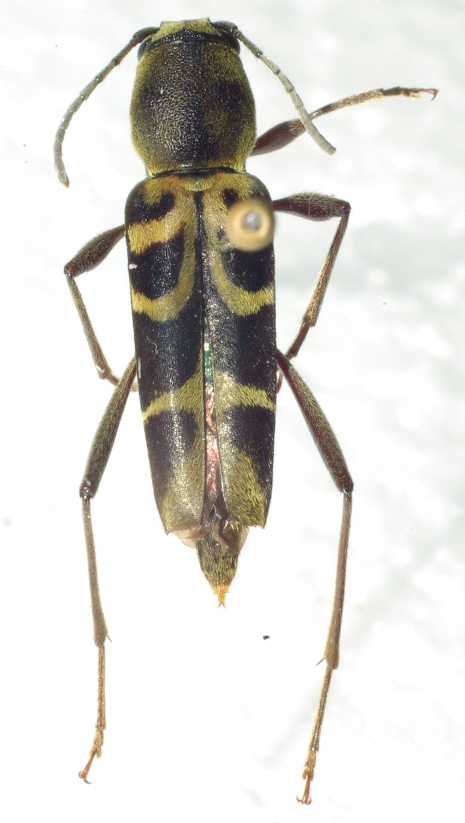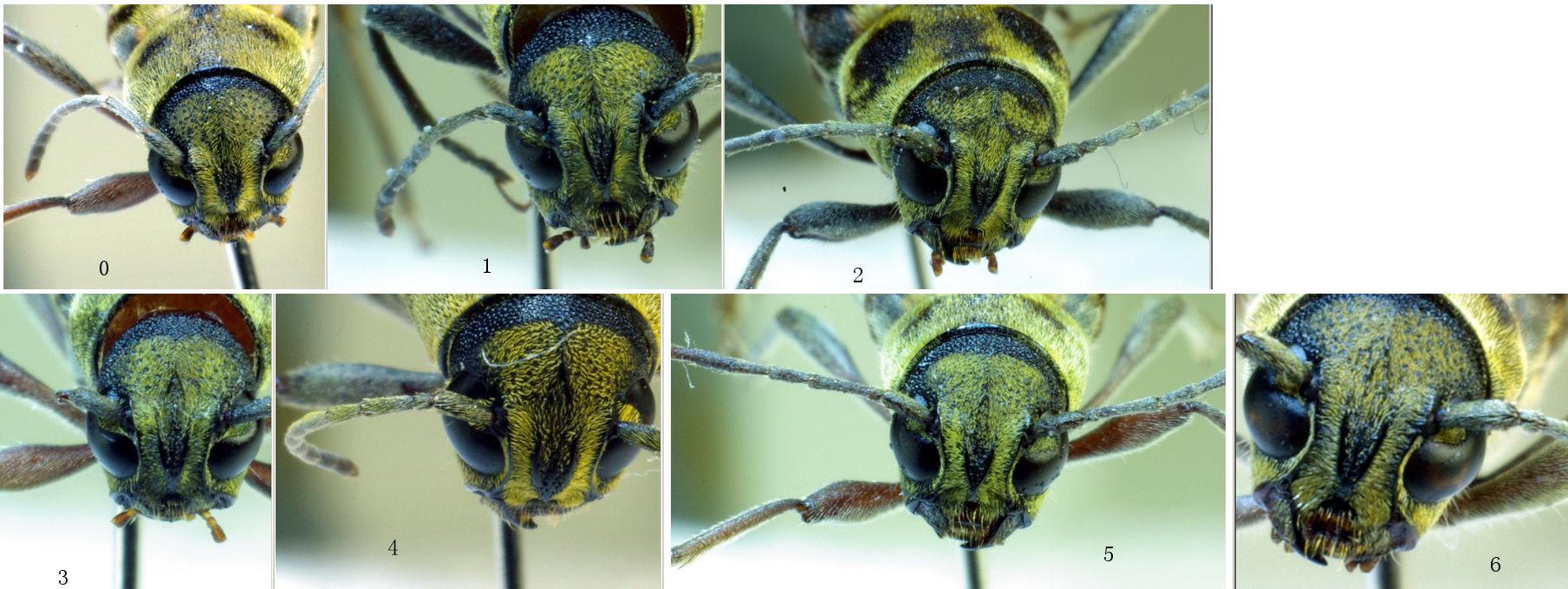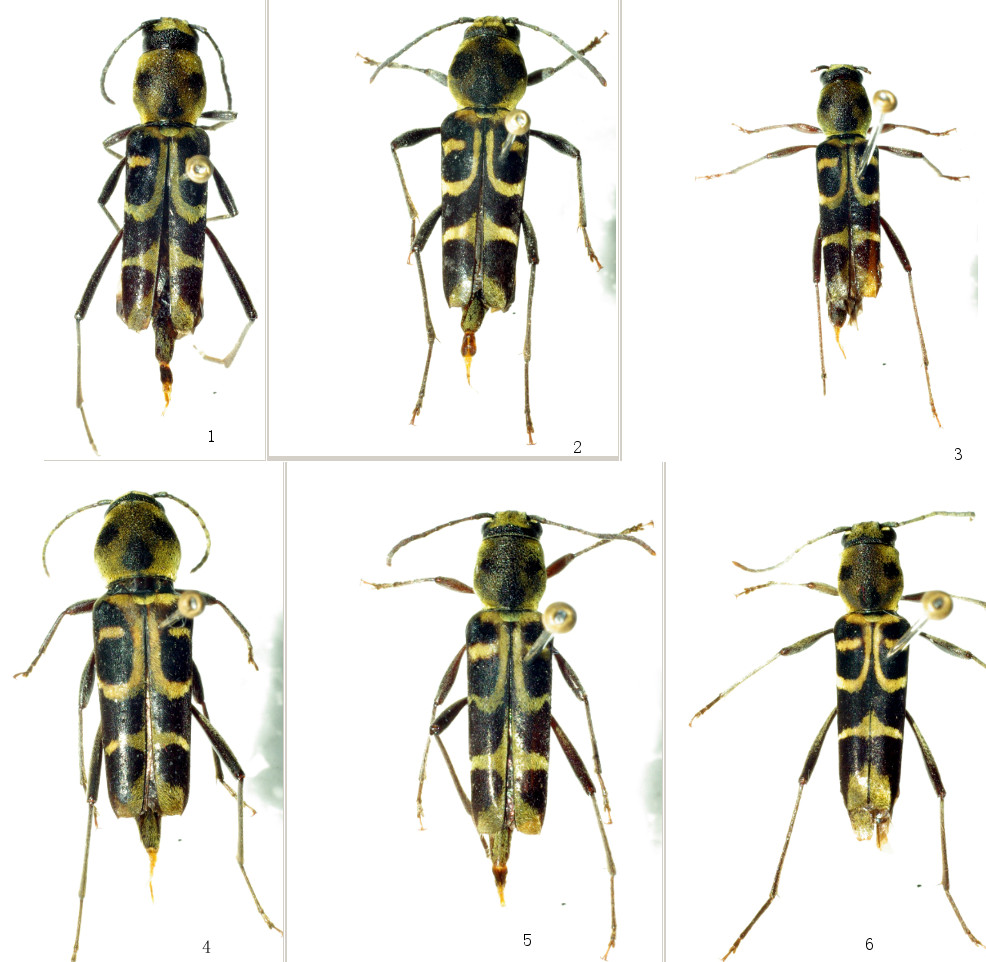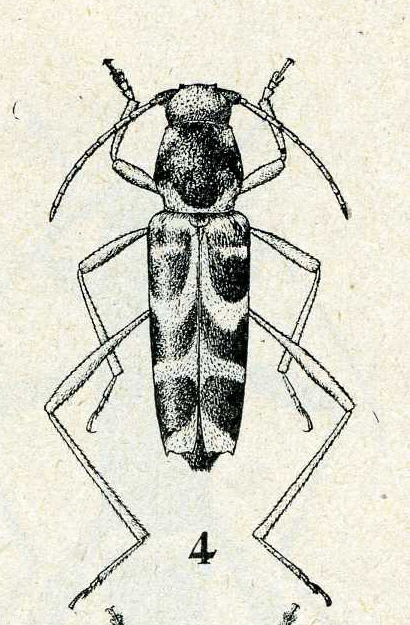| T O P I C R E V I E W |
| nalslan |
Posted - 18/01/2013 : 06:54:43

14 mm, from Leigongshan, Guizhou, southwest China, altitude about 1600 m.
Could not get what it is either from Hua et al.'s iconography book and Gressitt 1951.
Can you get me a clue?
Thanks. |
| 9 L A T E S T R E P L I E S (Newest First) |
| nalslan |
Posted - 25/01/2013 : 17:27:56
Thanks all your help! You guys are highly experienced.
Francesco, here's a picture of the front of all these species. Though the pictures are not sharp enough, they all have a "V" shape ridge on forehead and a small up side down "Y" shape on the top of the head (the latter is not so obvious). So it seems that all these specimans are X. buqueti.
Andreas, too bad I did not catch a male individual. I'll try to get one this year to see if it can relieve my headache. 
Thank you again! Have a good weekend.

|
| Xaurus |
Posted - 24/01/2013 : 19:11:20
Dear Nalslan,
for me this sps belong to X. buqueti a widespread and variable sps, the tomentation is in the range, the related sps are very similar and without series you can't identifiy such groups, or better you look at the male genitals in many cases of Clytini you find very good diff. features, but your spms are (all) females  . .
greetings
Andreas |
| Francesco |
Posted - 23/01/2013 : 21:25:43
It is about a species of the group buqueti.
Could you please take a picture of the forehead in order to observe the frontal ridge? |
| nalslan |
Posted - 23/01/2013 : 18:12:41

Thank you Xavier, the drawing you posted is way much better than the one I have in a translated book of Gressitt (1951).
I do have more headache bringing individuals which are similar to the one above (picture below). No. 1 and 2 are from the same site of that one above. The rest were caught from neighboring area. I am declining to say that no. 1,2,3 and 6 are more or less X. sikangensis (wild guessing), no. 4 maybe X. atronotatus draconiceps, and no. 5 might be another species which I don't know either.  |
| Xavier |
Posted - 22/01/2013 : 07:50:01

Gressitt (1951)- Longicornia, Vol 2. Longicorn beetles of China, pl. IX.
Here the drawing of Xylotrechus sikangensis Gressitt, 1942.
I don't know if your specimen could be a variety of this species. Do you have more specimens ?
I see no major difference for head, pronotum and apex of elytra. The outside curve of the third band is also quite similar. The main difference is connection of first,second and third band, which may belong to a variation ?? |
| nalslan |
Posted - 22/01/2013 : 04:35:56
Sorry Xavier, no offense by listing the differences. I am a beginner on id beetle and I just wanted to make myself clear.  |
| Xavier |
Posted - 21/01/2013 : 07:10:51
Dear nalslan,
It was the closer species in Hua's book ...Sorry, but I have no more idea. |
| nalslan |
Posted - 21/01/2013 : 05:19:40
Xavier, thanks for pointing out that. I went back and checked that picture against mine. I still can not make up my mind because of the following differences: 1) shape of the elytra tip: my speciman truncated adn has a spine, X. sikangensis seems more rounded, 2) shape of the yellow strips at the end of elytra: X. sikangensis' more like a band but my speciman's is larger and wider at the middle, and 3) the width of the second yellow strip and whether it is connected to the third strip: again, this band is wider and longer on my speciman, it connected to the third strip, however, they are not connected on X. sikangensis. |
| Xavier |
Posted - 19/01/2013 : 14:21:29
In Hua's iconography, I find Xylotrechus sikangensis Gressitt, 1942, from Sichuan. Bad picture and poor description, but it seems to be your species. |
|
|


